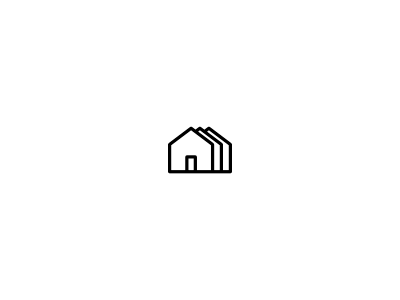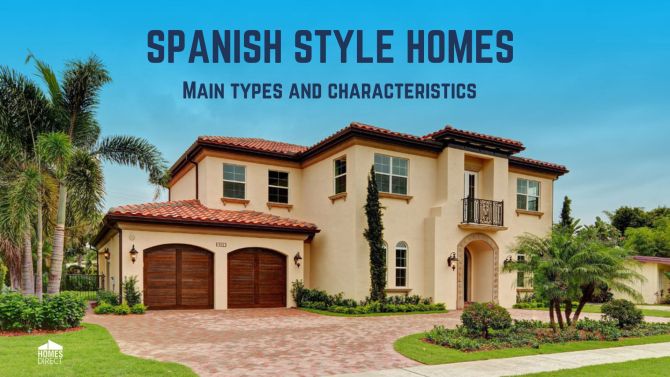
Welcome to a captivating journey through the alluring realm of Spanish-style homes, where timeless elegance and rich cultural heritage converge to create an atmosphere of unparalleled beauty. With its roots deeply embedded in Spain's vibrant history, this architectural style has gained immense popularity worldwide, enticing homeowners with its warm aesthetics, inviting courtyards, and captivating design elements.
Step inside, and you'll discover a world of intricate details and a sense of timelessness. The interior of Spanish-style homes showcases a seamless fusion of rustic elements, vibrant colors, and ornate embellishments, resulting in spaces that exude both grandeur and coziness. From the arches and columns that adorn the doorways and corridors to the intricately patterned tiles that grace the floors, every aspect of the interior design reflects the rich tapestry of Spanish culture and craftsmanship.
One of the key characteristics of Spanish-style homes is the emphasis on outdoor living. The design often incorporates charming courtyards and expansive terraces, allowing residents to bask in the Mediterranean climate and relish the joys of al fresco living. These outdoor spaces serve as extensions of the interior, seamlessly connecting the indoors with the beauty of nature, and providing a serene sanctuary for relaxation and entertaining.
In this article, we will delve deeper into the world of Spanish-style homes, exploring their architectural elements, interior design principles, and the unique charm they bring to any living space. Join us on this captivating journey as we unlock the secrets of Spanish-inspired architecture and interior design, igniting your imagination and inspiring your own personal design endeavors.
So, grab a cup of Spanish coffee, immerse yourself in the warmth of the Spanish sun, and prepare to be enchanted by the beauty and allure of Spanish-style homes. Let's embark on this delightful exploration together!
What is a Spanish-style house?
As the name suggests, Spanish-style homes are influenced by the colonial architecture during the Spanish rule. These types of homes usually have key design elements- stucco exteriors and charming terracotta roof tiles. The latter are found in the areas with Spanish influence: California, Florida, and the southwestern part of the United States.
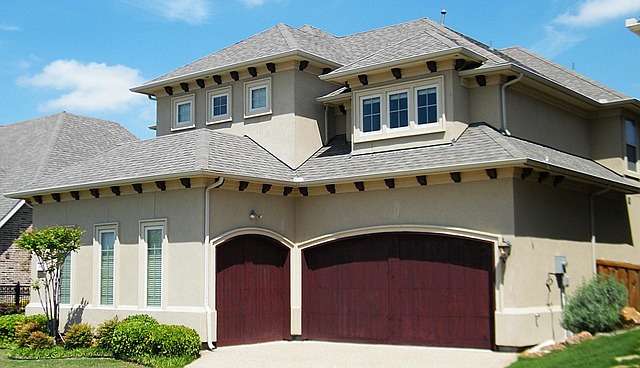
Image by R H from Pixabay
Spanish architecture style
If you have ever carried out research on Spanish architecture, then you've surely come across terms like Moorish, Mission Style, Monterey, etc. The main reason for having so many styles is that this style has been influenced by many sources over the years.
That's why there isn't a clear definition of what Spanish Architecture is and what kind of style it is. Some designers have started using the term Spanish Eclectic to refer to Spanish architecture. So, if you ever see the term Spanish Eclectic, be sure it's used to mean Spanish architecture.
Although Spanish architecture has had various influences throughout the years, there are some consistencies. Below we have gathered all the main characteristics that Spanish-style homes have. If you see a house with these characteristics then it's most likely a Spanish-style house.
Exteriors of Spanish-style homes
1. Spanish-style roofs
Exemplifying the essence of the Spanish Eclectic style, barrel roof tiles are renowned for their association with warm and earthy hues. In the realm of traditional architecture, these distinctive roofs were predominantly crafted from terracotta clay and slate, chosen for their remarkable resilience in the face of scorching temperatures. While modern tile roofs may incorporate concrete as an alternative material, the enduring popularity of terracotta and slate endures due to their exceptional durability, coupled with the added benefit of being environmentally friendly.
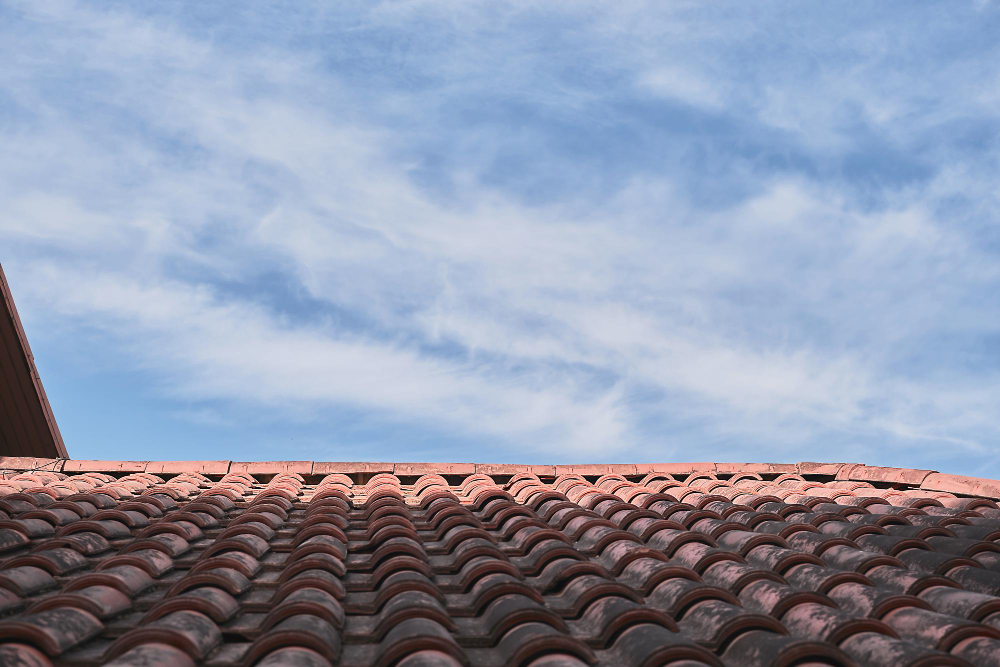
Image by ededchechine on Freepik
2. Wood support beams
In contemporary design, exposed wooden beam supports have become strongly associated with the farmhouse style. However, it's important to note that this architectural element has a long-standing presence in Spanish architecture, predating its adoption by modern designers.
In traditional Spanish homes, which were primarily constructed using durable and weighty adobe or mudbrick, wooden beams played a crucial role in supporting the roof. These beams often extended beyond the stucco walls and were visible from the exterior. In Spanish, these exposed ends of the wooden supports are referred to as "vigas," meaning "beams."
While modern building practices have transformed vigas into predominantly decorative elements in contemporary construction, their historical significance as functional structural supports in traditional Spanish homes remains noteworthy.
The presence of exposed wooden beams in Spanish architecture adds a touch of authenticity and evokes a sense of time-honored craftsmanship. It serves as a reminder of the enduring charm and architectural legacy that continues to influence design aesthetics today.
3. Colorful accents
A distinctive characteristic of Spanish-style homes lies in their vibrant and colorful accents. These accents serve as a lively expression of the rich Spanish culture and add a touch of playfulness to the overall design. By incorporating pops of bold and vivid colors throughout the interior and exterior spaces, Spanish-style homes come alive with energy and charm.
Colorful accents can be introduced in various ways. One popular method is through the use of patterned tiles. These intricately designed tiles, often featuring geometric or floral motifs, can be found adorning floors, walls, staircases, and even countertops.
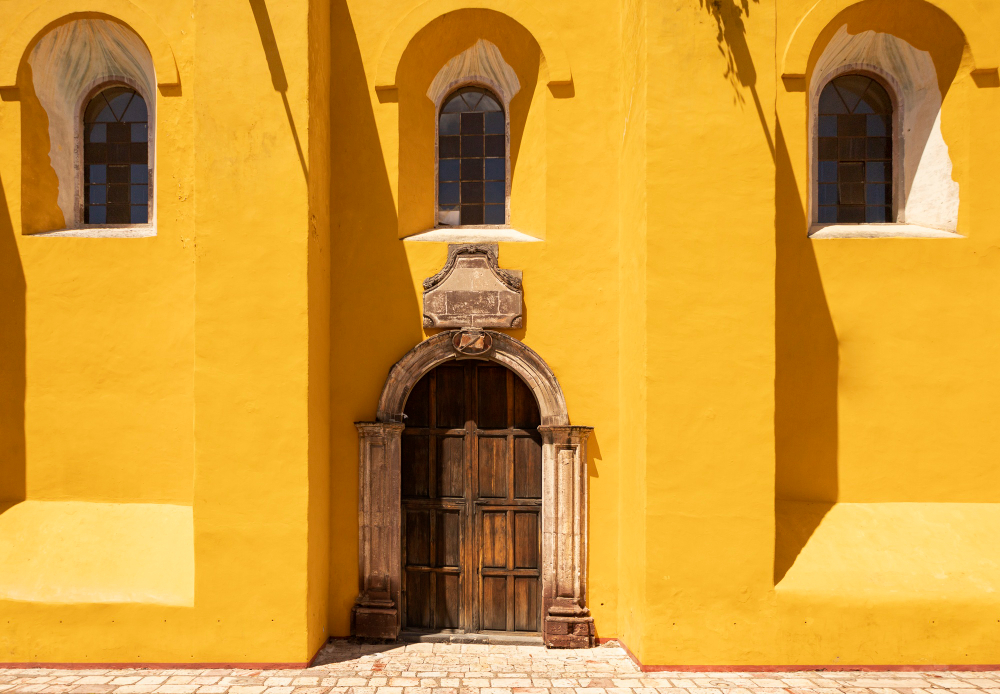
Image by Freepik
4. Stucco walls
Once the iconic red tile roof catches the attention, the next striking feature that captures the gaze of many when observing Spanish homes is the clean and robust stucco walls. Functioning as a protective covering for underlying building materials against the forces of nature, stucco often presents itself in a pristine white or creamy color. This combination of the distinctive red tile roof and the smooth, sturdy stucco walls creates a visually captivating aesthetic that is synonymous with Spanish architectural style.
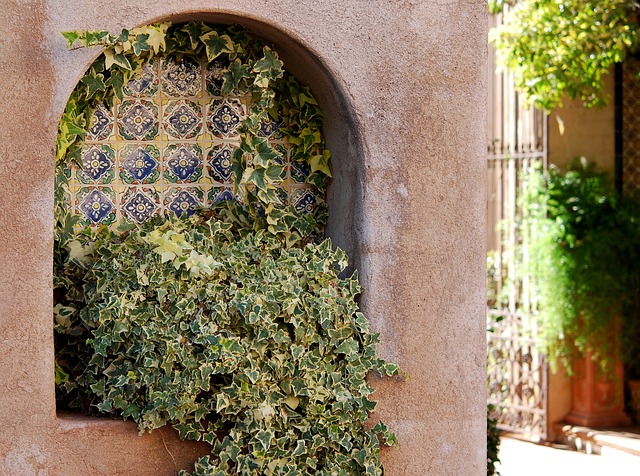
Image by Lee Travathan from Pixabay
5. Arches and curves
While Spanish homes often have a rectilinear foundation, their design incorporates captivating arches and curves that are synonymous with the Spanish Eclectic style. While the rectilinear nature of these homes is primarily influenced by the historical practice of expanding existing structures as families grew, the design elements celebrate the beauty of arches and curves.
Smooth archway entryways serve as welcoming focal points, inviting residents and visitors into the home with an elegant and graceful touch. These arches, often adorned with intricate detailing, create a sense of grandeur and timeless beauty.
Arcades, or covered walkways, can be found lining the interior courtyards of Spanish homes. These arcades provide shaded areas for relaxation and socializing, while their curved design adds a sense of flow and harmony to the space.
6. Cylindrical turrets
Another notable feature of Spanish homes is the presence of cylindrical turrets, which contribute to the architectural charm. These towers, often positioned at corners or as standalone structures, create visual interest and lend a touch of romance to the overall design.
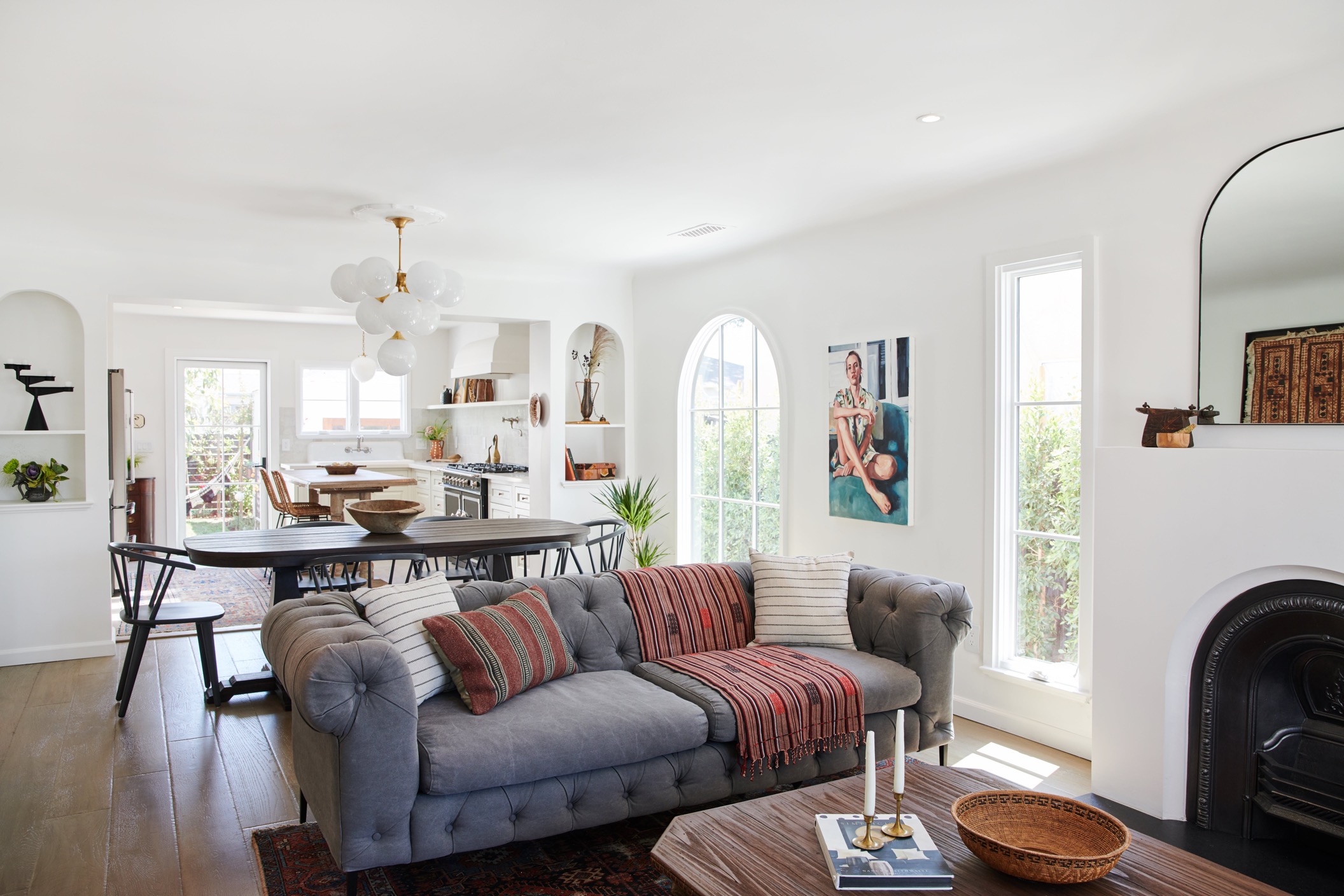
Photo by Tessa Neustadt, courtesy of ALLPRACE Homes
Spanish-style home interior
1. Stone
In Spanish-style homes, the use of stone as an accent on the walls can add a charming rustic touch to the overall aesthetic. While stucco is a common choice for the main exterior, incorporating stone accents can elevate the visual appeal and create a captivating contrast. The combination of stucco and stone lends depth and texture to the walls, enhancing the overall character of the home.
When selecting stone accents for Spanish-style homes, it is important to consider the color palette. Light shades and earthy tones harmonize beautifully with stucco walls, creating a cohesive and balanced look. The natural hues of stone, such as warm browns, sandy beiges, and soft grays, complement the earthy tones of stucco, evoking a sense of harmony and connection to the surrounding environment.
2. High ceilings
While the majority of Spanish-style houses feature standard ceiling heights, there are also some that boast high ceilings, adding a sense of grandeur and spaciousness to the interior. Whether your Spanish-style home has standard or high ceilings, a key principle to keep in mind when decorating is to embrace simplicity.
3. Fireplace
In Spanish-style homes, the presence of a grand fireplace is a common feature that adds both aesthetic appeal and functional warmth. While the region may not experience hot weather throughout the year, the fireplace serves as a focal point and creates a cozy ambiance during cooler months.
The fireplace in a Spanish-style home can take on various forms. It might feature a chunky mantle, intricately carved with ornate details, or it could extend all the way to the ceiling, commanding attention and becoming a striking architectural element in the living space. Regardless of its specific design, the fireplace holds significant importance in the overall aesthetic of the home.
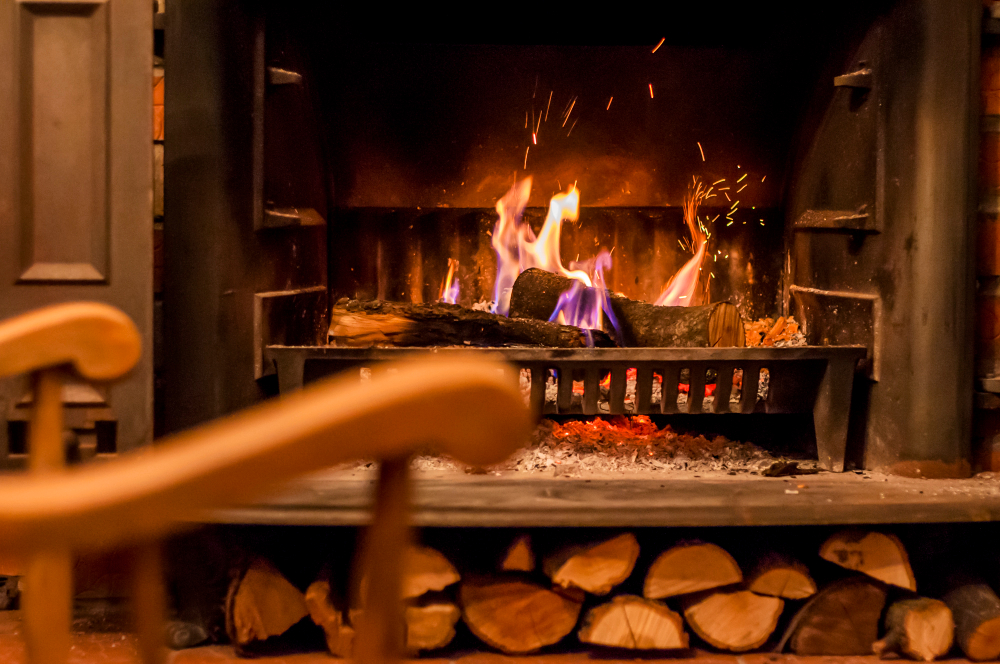
Image by Dragana_Gordic on Freepik
4. Wooden furniture
When it comes to furnishing a Spanish-style interior, incorporating wood furniture is key to capturing the authentic charm and warmth of the design. Spanish-style furniture is characterized by its solid and substantial nature, often featuring heavy dark wood pieces that exude a sense of timeless elegance.
Accent tables play a significant role in Spanish-style interiors, serving as functional and decorative elements. Look for sturdy tables with intricate carvings or wrought iron details that add a touch of Old World craftsmanship. These accent tables, whether placed in the living room, hallway, or bedroom, contribute to the overall Spanish aesthetic and provide a perfect platform for displaying decorative items or table lamps.
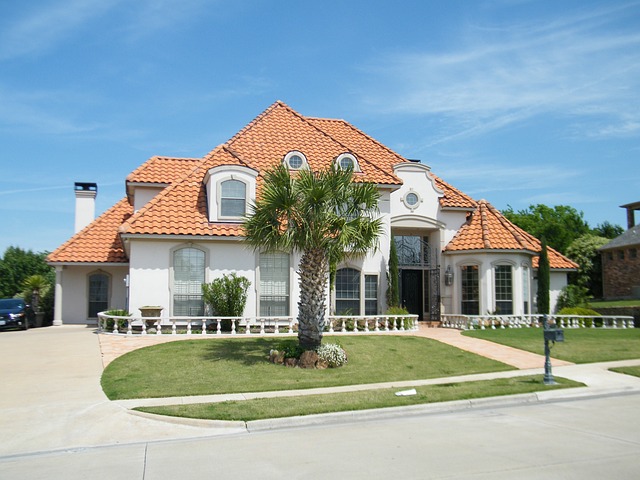
Image by R H from Pixabay
History of Spanish-style homes
The introduction of Spanish architecture to America can be traced back to the year 1915 when the Panama-California Exposition took place in San Diego. It was during this event that the architectural style made its debut on American soil. Renowned architect Bertram Goodhue played a significant role in bringing Spanish-inspired design to life through his creation known as the California Quadrangle, situated in Balboa Park.
Designed by Goodhue, the California Quadrangle showcased the captivating elements of Spanish architecture, captivating visitors with its unique charm and timeless appeal. This structure served as an iconic representation of the architectural style and left a lasting impact on the American architectural landscape.
The current landscape of Spanish homes predominantly showcases a fusion of various architectural styles. While preserving the quintessential elements of stucco exterior walls and red tile roofs, these homes often incorporate additional design features that span a range of influences. For instance, you might come across a Spanish home adorned with a Mission-style bell tower or boasting a Monterey-style second-floor balcony.
The versatility of Spanish architecture offers endless possibilities for home builders and designers. The fusion of various elements allows for creative freedom and the opportunity to craft unique and personalized residences. Whether one seeks a traditional Spanish aesthetic or desires to incorporate modern touches into the design, the options are boundless.
The different types of Spanish-style houses
Spanish-style houses encompass a variety of sub-styles, each with its own distinct characteristics and influences. Here are a few notable types of Spanish-style houses:
-
Traditional Spanish houses
These homes reflect the timeless charm and elegance of Spanish architecture. They typically feature stucco exteriors, red tile roofs, arched doorways, wrought iron accents, and vibrant color schemes. Traditional Spanish houses often incorporate elements such as courtyards, hand-painted tiles, and decorative detailing.
-
Modern Spanish-style homes
This is a contemporary interpretation of Spanish architecture, blending traditional elements with modern design features. Modern Spanish-style homes may incorporate clean lines, minimalist aesthetics, large windows, and open floor plans while still embracing the distinctive features of Spanish design.
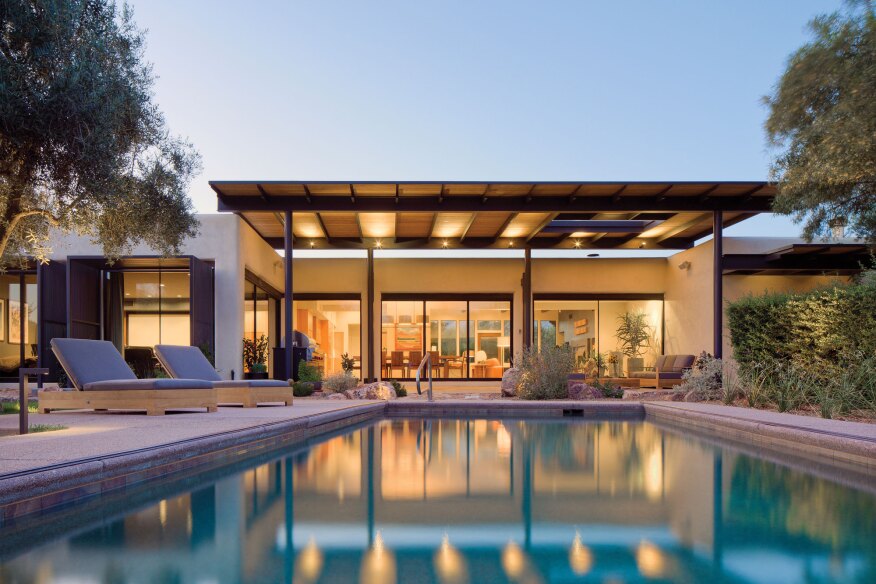
Image from remodeling.hw.net
-
Spanish hacienda-style homes
Inspired by the grand estates of colonial Spanish America, these homes exude a sense of luxury and privacy. They often feature thick walls, central courtyards, intricate tilework, archways, and wooden beamed ceilings. Spanish hacienda-style homes create a serene and secluded ambiance.
-
Spanish Mediterranean house
These homes draw influence from Mediterranean architecture, combining Spanish and Italian design elements. They showcase features such as terracotta roofs, white stucco exteriors, decorative wrought iron, and lush landscaping. Spanish Mediterranean houses often emphasize outdoor living spaces and capture a relaxed coastal vibe.
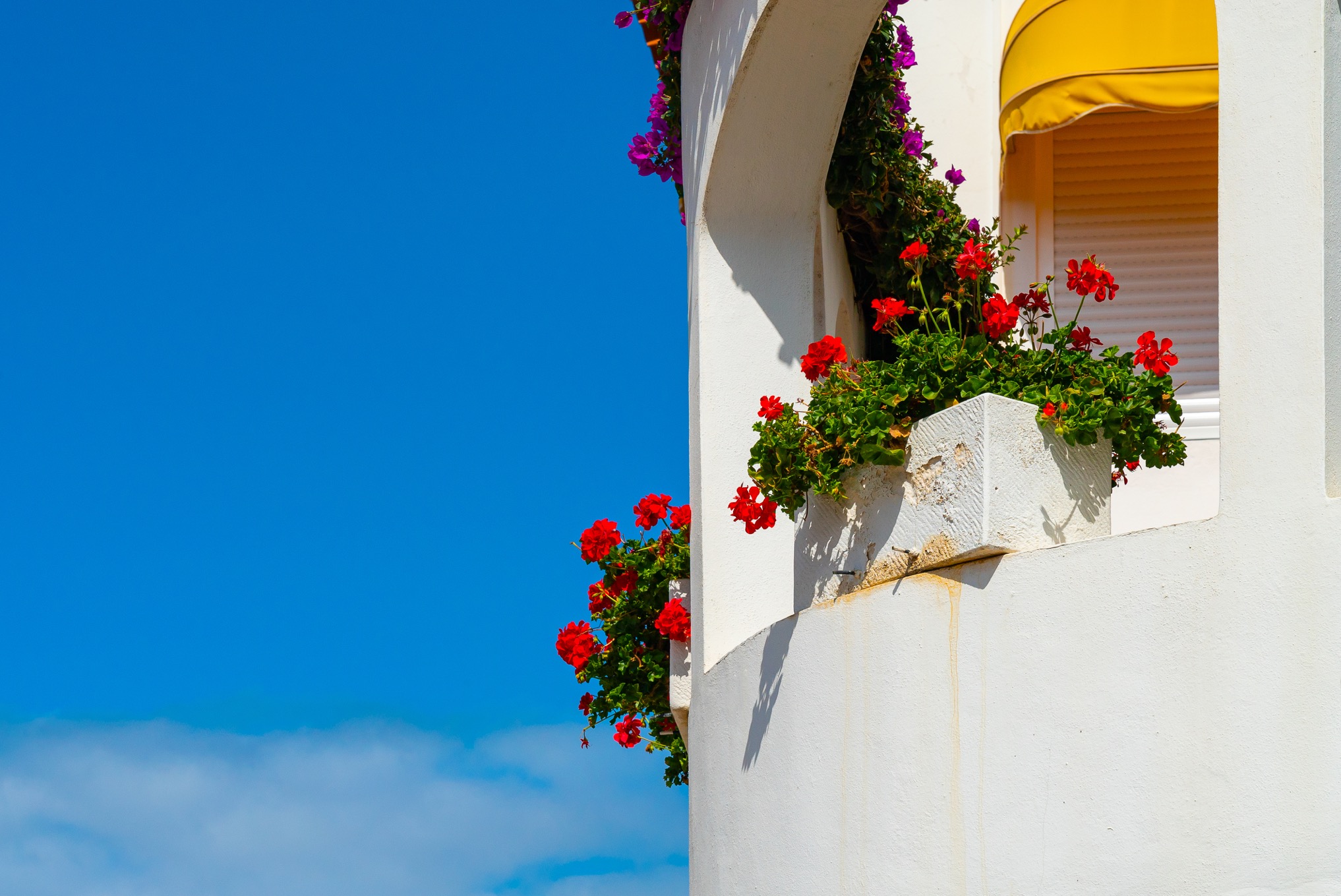
Image by GarryKillian on Freepik
-
Spanish villa homes
Inspired by the grand villas of Spain, these homes feature spacious layouts, elegant details, and a touch of Old World charm. Spanish villa-style homes often incorporate elements like terraces, balconies, courtyard gardens, and intricate tilework. They offer a luxurious and sophisticated living experience.
-
Spanish colonial home
Reflecting the architectural heritage of the Spanish Colonial period, these homes feature simplicity, symmetry, and a sense of solidity. They typically include stucco exteriors, red tile roofs, wooden beam accents, and spacious courtyards. Spanish colonial homes capture the essence of historic Spanish design.
Questions:
What makes a Spanish-style home?
Spanish-style homes are characterized by a combination of architectural features and design elements that reflect the traditional aesthetics of Spanish culture and history. Some key elements include stucco exteriors, red tile roofs, arched doorways and windows, wrought iron accents, and decorative detailing.
What are the elements of Spanish architecture?
Spanish architecture is known for its distinctive features and design elements. Some common elements include:
-
stucco exteriors
-
red tile roofs
-
arched doorways and windows
-
wrought iron accents
-
courtyards and patios
-
decorative tilework
What is Spanish-style interior design?
Spanish-style interior design complements the architectural elements of Spanish homes, creating a cohesive and inviting atmosphere. Some key characteristics of Spanish-style interior design include:
-
warm color palette
-
textured walls
-
ornate details
-
rustic furnishings
-
natural materials
What are Spanish-style properties?
Spanish-style properties refer to homes or buildings that embody the architectural style and design elements of Spanish culture. They can include residential properties, such as single-family houses or villas, as well as commercial buildings and public structures.
What material are Spanish-style homes?
Spanish-style homes typically use a combination of materials that contribute to their distinctive appearance and functionality. Some common materials include:
-
stucco
-
clay or terracotta tiles
-
wood
-
wrought iron
-
stone and tile
In conclusion, Spanish-style homes offer a captivating blend of history, culture, and architectural beauty. With their stucco exteriors, red tile roofs, arched doorways, and ornate details, these homes have a unique allure that stands the test of time. Whether you prefer the simplicity of traditional Spanish design or the intricate patterns of the revival style, there is a Spanish-style home that will capture your heart.
If you're considering embracing the charm of a Spanish-style home or need assistance in choosing the perfect type of house for your needs, Homes Direct is here to help.
